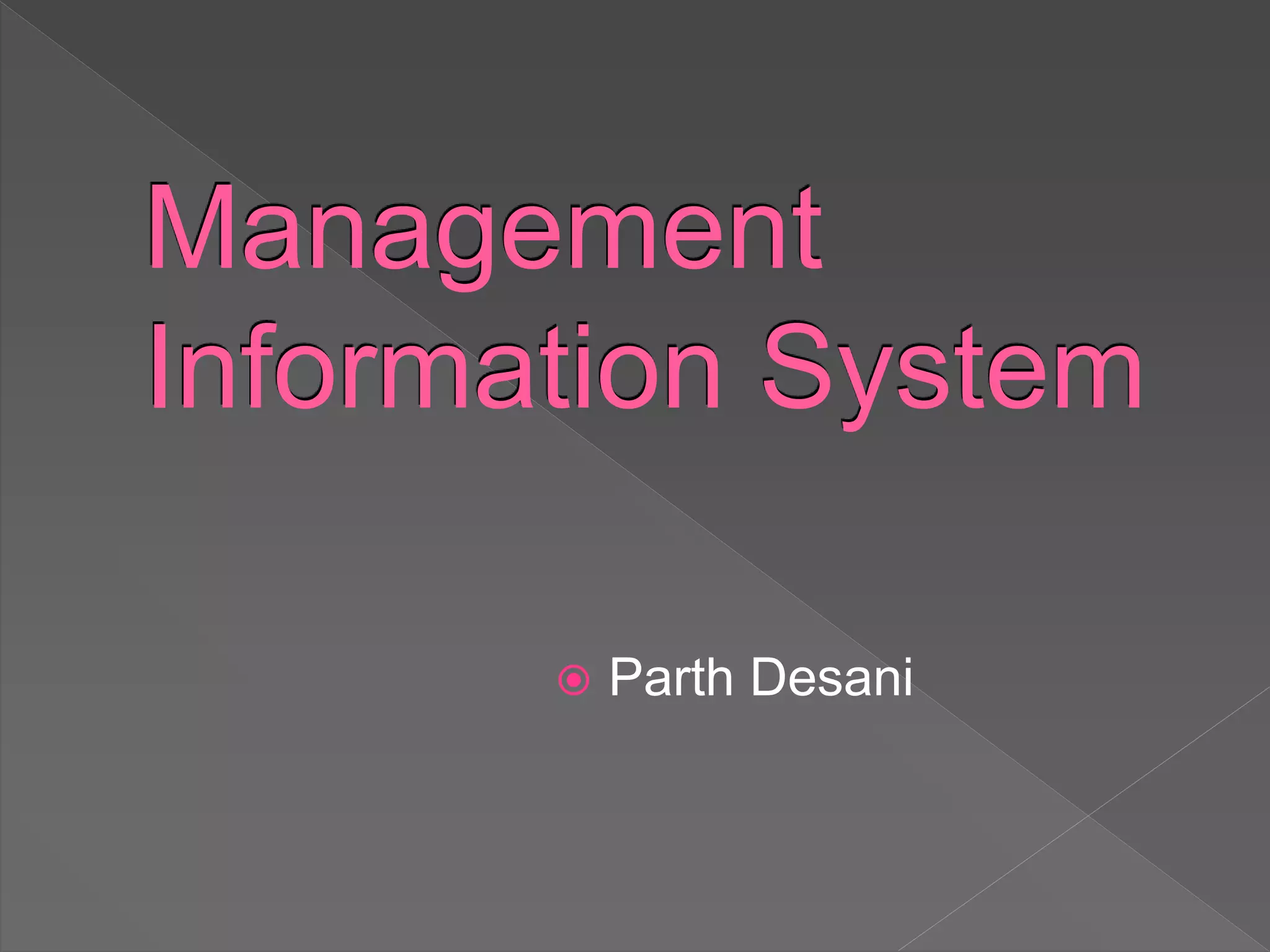This document provides an overview of management information systems (MIS). It defines MIS as computer systems used to manage hardware, software, data, procedures, and people to analyze and facilitate strategic and operational activities. The history of MIS is discussed from mainframe computers in the first era to today's enterprise systems. Different types of MIS are described like decision support systems, executive information systems, and enterprise resource planning systems. Advantages of MIS include improved decision making, competitive advantages, and enhanced customer management. The document concludes with how workforce management systems and analytics can be used to enhance productivity.



















